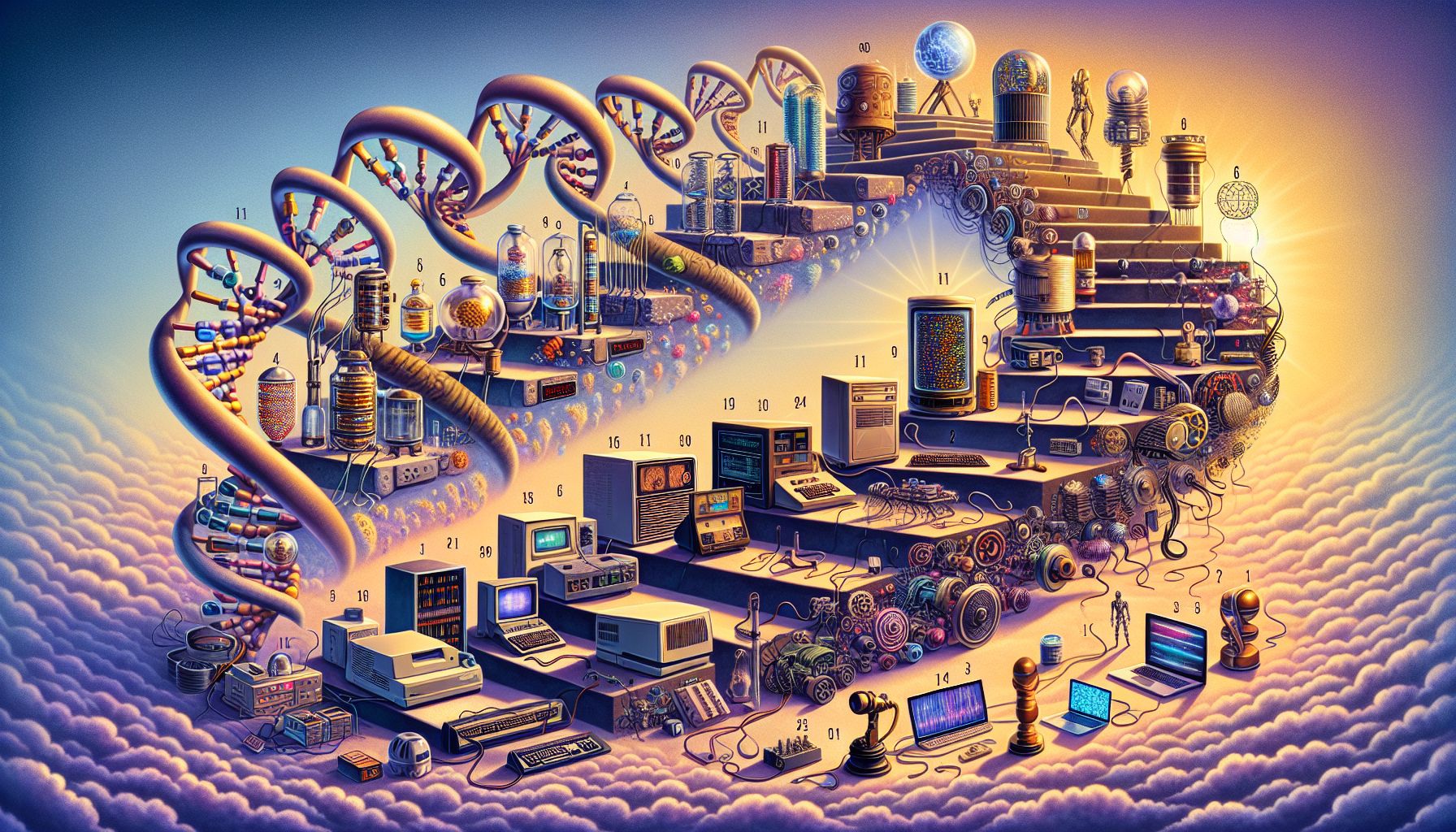📌 Let’s explore the topic in depth and see what insights we can uncover.
⚡ “Can you imagine a world without Siri, Alexa, or Google? Believe it or not, this AI-dominated reality was once a mere figment of a genius’s imagination.”
In the epoch of digital transformation, Artificial Intelligence (AI) has emerged as a significant game changer. From autonomous vehicles to chatbots to personalized content recommendations, AI is currently revolutionizing numerous industries around the globe. However, this didn’t happen overnight. The journey of AI is a fascinating tale of continuous evolution, from the theoretical foundations laid by Alan Turing to the sophisticated technologies we see today. This blog post will take you on a thrilling ride through the evolution of AI. We’ll start from the Turing era and make our way to the present day, exploring the significant advancements and breakthroughs that have shaped AI as we know it. Whether you’re an AI enthusiast, a tech nerd, or simply curious about the subject, this post is sure to pique your interest.
🕰️ The Turing Era: The Birth of AI Concept

Tracing AI's journey: From Turing's concept to modern marvel
The concept of AI traces its roots back to the mid-20th century with the pioneering work of British mathematician and logician, Alan Turing. Often referred to as the “father of modern computing,” Turing proposed the idea of a “universal machine” that could simulate any computation given enough time and resources. This concept eventually gave birth to the Turing Test, a method to determine a machine’s ability to exhibit intelligent behavior indistinguishable from that of a human. While Turing did not explicitly use the term “Artificial Intelligence,” his ideas laid the groundwork for the development of AI. His universal machine is akin to the modern day computer, and the Turing Test still serves as a benchmark for AI capabilities.
🚀 The Dartmouth Workshop: Birth of AI as a Field
The birth of AI as a formal academic field occurred in 1956 at a historic workshop at Dartmouth College. 🔍 Interestingly, where the term “Artificial Intelligence” was first coined by John McCarthy, an American computer and cognitive scientist. McCarthy, along with other pioneering scientists like Marvin Minsky, Allen Newell, and Herbert A. Simon, envisioned that “every aspect of learning or any other feature of intelligence can in principle be so precisely described that a machine can be made to simulate it.” The Dartmouth workshop led to the establishment of AI as a distinct discipline, with several universities across the world setting up dedicated departments for AI research. This period also witnessed the development of early AI programs, including the Logic Theorist and the General Problem Solver.
💡 The Era of Expert Systems and Neural Networks
The next major milestone in AI evolution came in the 1970s and 80s with the development of expert systems and neural networks. Expert systems, such as MYCIN and DENDRAL, were designed to mimic the decision-making ability of a human expert. They were among the first truly practical applications of AI, used in areas like medical diagnosis and chemical analysis. At the same time, the concept of neural networks started gaining traction. Inspired by the human brain’s interconnected neurons, these networks aimed to simulate human-like learning in machines. The Perceptron, created by Frank Rosenblatt, was one of the earliest neural networks. However, it was with the backpropagation algorithm, introduced in the 1980s, that neural networks truly started to shine. This algorithm enabled the training of multi-layered neural networks, paving the way for the development of deep learning.
🌐 The Internet Era: AI Goes Mainstream
The advent of the internet and the explosion of data it brought about marked a turning point for AI. The sheer volume of data available for training AI systems led to significant improvements in their performance, making AI a mainstream technology. This era saw the rise of machine learning, a subset of AI that involves teaching machines to learn from data and make decisions or predictions accordingly. Companies like Google, Amazon, and Facebook started leveraging machine learning to improve their services. From Google’s search engine algorithms to Amazon’s product recommendations to Facebook’s news feed personalization, AI began transforming the digital landscape.
🤖 The Present and Beyond: AI in the Era of Big Data and Deep Learning
Today, we’re in the era of big data and deep learning, a more advanced form of machine learning that uses complex neural networks. AI has become an integral part of our everyday lives, from voice assistants like Siri and Alexa to autonomous vehicles to personalized content recommendations on Netflix. Recent breakthroughs, like Google’s AlphaGo defeating the world champion in the complex board game Go, highlight the remarkable progress AI has made. Moreover, advancements in natural language processing (NLP) and computer vision have enabled AI to understand and interact with the world in ways that were unimaginable a few decades ago. Looking ahead, the possibilities for AI are endless. With the rise of quantum computing, the advent of AI ethics, and the continuous improvements in machine learning algorithms, the future of AI seems brighter than ever.
🧭 Conclusion
The journey of AI from Turing to today is nothing short of a thrilling ride. From its conceptual inception in the mind of Alan Turing, through its formal birth at the Dartmouth workshop, to its current state of ever-increasing sophistication and ubiquity, AI has evolved at a remarkable pace. However, it’s important to remember that we’re still in the early days of AI’s evolution. As we continue to push the boundaries of what’s possible with AI, we’re likely to witness even more exciting breakthroughs in the coming years. As the adage goes, “The best is yet to come.” For AI, this couldn’t be more accurate.
⚙️ Join us again as we explore the ever-evolving tech landscape.
